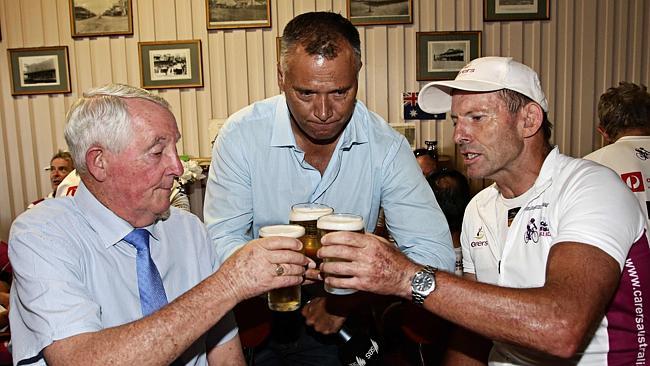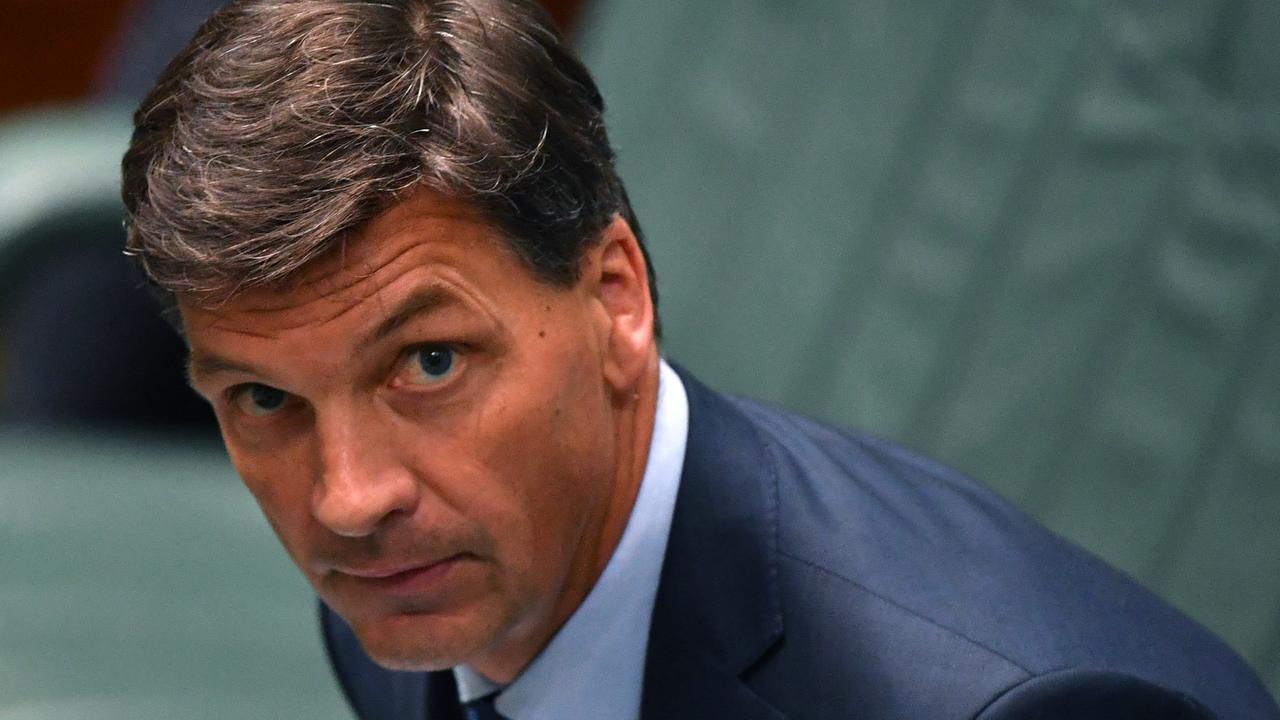Two causes collide as Tony Abbott rides into Cootamundra
As two roadshows rolled through Cootamundra, country NSW, it was almost inevitable they would collide.

Two roadshows rolled through the town in Cootamundra, country NSW, and it was almost inevitable they would collide.
As journalist Stan Grant made an impassioned speech at a travelling community forum being held by the Recognise movement, the government’s official yes-case for constitutional change on indigenous relations, Tony Abbott’s 19th annual pollie pedal charity ride straggled in from Yass, 120km away. The former prime minister, usually preferring to be at the head of the peloton in his signal eight-day, 1000km event, had suffered gear trouble and was beaten to the Riverina town’s central boulevard by half a dozen pink Lycra-clad colleagues.
Eventually Mr Abbott made it, though, to prop up the bar at the Albion Hotel for a shandy with Coota Mayor Jim Slattery, as his entourage flopped around him in the cool of the pub.
Meanwhile, Grant, having concluded his duties at an event where lively discussion flowed on questions of sovereignty and treaty, as well as on constitutional recognition of Australia’s first peoples, himself had a moment of recognition. He might have become an indigenous campaigner and possible political hopeful of late but at heart he’s a reporter, a yarn-spotting TV newsman through-and-through, so Grant elbowed his way into the sudden melee down the road for a story tip or two from Mr Abbott.
Thus ensued a second round of shandies, with Grant huddling over frothies with the former PM for indigenous affairs.
The elegant town has a particular significance for Grant, a Wiradjuri man. In his book Talking To My Country, he relates the tale of his great-aunt, his grandfather’s sister Eunice, who was one of an untold number of stolen girls taken in at the notorious Cootamundra Aboriginal Girls Home, stripped of her name and identified only by a number: 658.
Yesterday, after the town hall-style meeting, Grant and others visited the home, now called Bimbadeen and many years ago turned into a Bible college and then convention centre, but which between 1912 and 1969 was material evidence of Australian assimilation policy.
Out the front was the old water well around which girls newly brought to the school would sit and stare down the long driveway, waiting expectantly for their parents to come and collect them. “They didn’t know they weren’t coming back,” Cootamundra elder Uncle Bob Glanville, whose own grandmother was stolen and taken to the facility, said.
For Grant, the place — he has visited it many times, and has a treasured, bittersweet photograph of aunt Eunice in a group of girls at the front of the building, right by the well — is a reminder to those who propose Australians should “just get over” the impact that the British arrival had on Aborigines.
“This is not something to get over,” he said, gesturing. “This is something to touch, this is where those girls were forced to live.”


